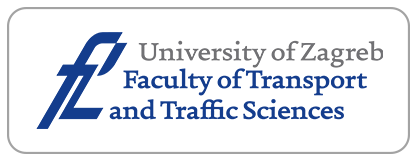Subjective Air Traffic Complexity Analysis Based on Weak Supervised Learning

Downloads
Controller subjective evaluation is one of the most important ways to assess air traffic complexity. However, the inconsistency of human experts has a negative impact on the inference of complexity analysis models. To solve this problem, this paper proposes to construct a weakly supervised air traffic complexity dataset using highly reliable traffic situation similarity as labelling information. On this basis, a distance metric learning model is trained to generate a distance metric matrix that satisfies the similarity relationship. Finally, the K-means algorithm is combined to realise preferred complexity situation level classification and evolution analysis. Taking the actual operating data of a mid-southern area sector of China as an example, the effectiveness of the proposed method is verified. Experimental results show that the aircraft density, aircraft ground speed variance, heading disorder, convergence speed and horizontal conflict have a greater impact on the complexity situation. Compared with the K-means algorithm based on Euclidean distance, metric learning improves the optimal silhouette coefficient and Davidson-Boldin index by 31.80% and 12.97%, respectively. In addition, it is confirmed that the situation evolution is driven by one or two key influencing factors.
Downloads
Gawade M, Zhang Y. Synthesis of remote air traffic control system and air traffic controllers’ perceptions. Transportation research record. 2016;2600(1):49-60. DOI: 10.3141/2600-06.
Antulov-Fantulin B, et al. Determining air traffic complexity–challenges and future development. Promet-Traffic&Transportation. 2020;32(4):475-485. DOI: 10.7307/ptt.v32i4.3401.
Goranson J. Looking for trouble: How well the FAA's enhanced traffic management system predicts aircraft congestion. Massachusetts Institute of technology, 1993. URL: http://hdl.handle.net/1721.1/12155.
Kopardekar P, Magyarits S. Measurement and prediction of dynamic density // Proceedings of the 5th USA/Europe Air Traffic Management R & D Seminar. 2003, 139. URL: https://www.academia.edu/68291479/Measurement_and_Prediction_of_Dynamic_Density.
Laudeman IV, et al. Dynamic density: An air traffic management metric. NASA/TM-1998-112226, Moffett Field, CA: NASA 1998. URL: https://ntrs.nasa.gov/citations/19980210764.
Gianazza D, Guittet K. Selection and evaluation of air traffic complexity metrics // 2006 ieee/aiaa 25TH Digital Avionics Systems Conference. IEEE. 2006:1-12. DOI: 10.1109/DASC.2006.313710.
Gianazza D. Forecasting workload and airspace configuration with neural networks and tree search methods. Artificial intelligence. 2010;174(7-8):530-549. DOI: 10.1016/j.artint.2010.03.001.
Zhu X, Cai K, Cao X. A semi-supervised learning method for air traffic complexity evaluation // 2017 Integrated Communications, Navigation and Surveillance Conference (ICNS). IEEE, 2017:1A3-1-1A3-11. DOI: 10.1109/ICNSURV.2017.8011885.
Cao X, et al. A knowledge-transfer-based learning framework for airspace operation complexity evaluation. Transportation Research Part C: Emerging Technologies. 2018;95:61-81. DOI: 10.1016/j.trc.2018.07.008.
Zhang W, et al. Sector complexity evaluation based on conditional generative adversarial networks. Journal of Transportation Systems Engineering and Information Technology. 2021;21(6):226-233. DOI: 10.16097/j.cnki.1009-6744.2021.06.026.
Andraši P, et al. Subjective air traffic complexity estimation using artificial neural networks. Promet-Traffic&Transportation. 2019;31(4):377-386. DOI: 10.7307/ptt.v31i4.3018.
Cao X, et al. A knowledge-transfer-based learning framework for airspace operation complexity evaluation. Transportation Research Part C: Emerging Technologies. 2018;95:61-81. DOI: 10.1016/j.trc.2018.07.008.
Li B, et al. A deep unsupervised learning approach for airspace complexity evaluation. IEEE Transactions on Intelligent Transportation Systems. 2021;23(8):11739-11751. DOI: 10.1109/TITS.2021.3106779.
Antulov-Fantulin B. Air traffic complexity model based on air traffic controller tasks. University of Zagreb. Faculty of Transport and Traffic Sciences, 2020. URL: https://repozitorij.fpz.unizg.hr/islandora/object/fpz:2296.
Jurinić T, et al. Defining terminal airspace air traffic complexity indicators based on air traffic controller tasks. Aerospace. 2024;11(5):367. DOI: 10.3390/aerospace11050367.
Pérez Moreno F, et al. Determination of air traffic complexity most influential parameters based on machine learning models. Symmetry. 2022;14(12):2629. DOI: 10.3390/sym14122629.
Moreno FP, et al. Prediction of air traffic complexity through a dynamic complexity indicator and machine learning models. Journal of Air Transport Management. 2024;119:102632. DOI: 10.1016/j.jairtraman.2024.102632.
Zhou ZH. A brief introduction to weakly supervised learning. National science review. 2018;5(1):44-53. DOI: 10.1093/nsr/nwx106.
Yang L, Jin R. Distance metric learning: A comprehensive survey. Michigan State University. 2006;2(2):4. URL: https://www.cse.msu.edu/~rongjin/semisupervised/dist-metric-survey.pdf.
Xing E, et al. Distance metric learning with application to clustering with side-information. Advances in neural information processing systems. 2002:15. DOI: 10.5555/2968618.2968683.
De Vazelhes W, et al. Metric-learn: Metric learning algorithms in Python. The Journal of Machine Learning Research. 2020;21(1):5447-5452. URL: http://jmlr.org/papers/v21/19-678.html.
Pedregosa F, et al. Scikit-learn: Machine learning in Python. The Journal of Machine Learning Research. 2011;12:2825-2830. DOI: 10.5555/1953048.2078195.
Copyright (c) 2025 Weining ZHANG, Weijun PAN, Changqi YANG, Xinping ZHU, Jianan YIN, Jinghan DU

This work is licensed under a Creative Commons Attribution-NonCommercial 4.0 International License.




















